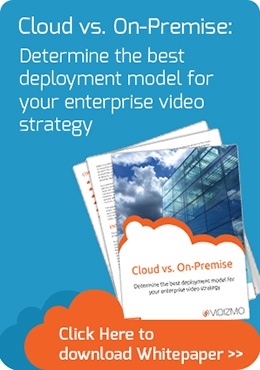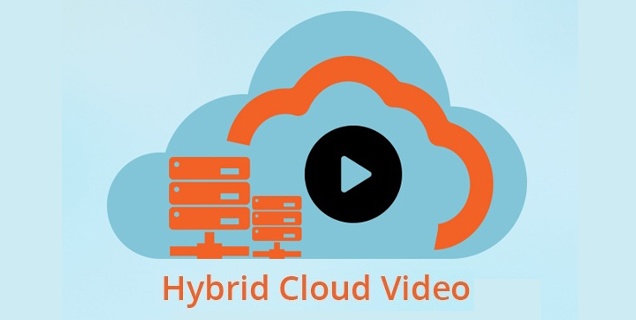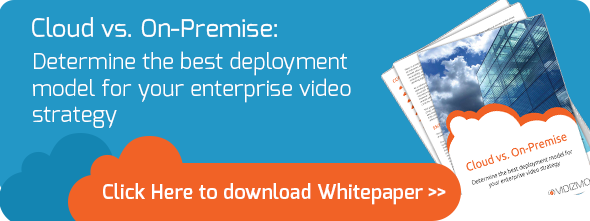Some companies tend to think of hybrid cloud as a transitionary state. However, with hybrid technologies offering consistent end user, IT management & security, and application development and hosting experience across public and private cloud as well as on-premises infrastructure, this cannot be further from the truth.
According to Gartner Inc., a massive shift to hybrid architecture is underway as they predict 90 percent of organizations will adopt hybrid infrastructure management by 2020.
A trend potentially so far-reaching then requisites that contemporary enterprises orchestrate on-premises and off-premises infrastructure components strategy that aligns with the nature of their workloads.
What exactly does a hybrid cloud scenario entail?
In a hybrid cloud, enterprises can maintain external workloads with large public cloud providers while retaining others on-premises or in a private cloud located in-house. Such a scenario is expected to represent the future of enterprise workload and infrastructure management.
Moving forward, a hybrid cloud will become fundamentally indispensable for most companies because some workflows will have to be retained on-premises even as others inevitably make a steady shift towards the public cloud. Such a scenario will be even more pertinent to organizations that are required to abide by strict governmental or industry regulations or simply ones that wish to avail cloud benefits while retaining a level of control over specific data, functions or workflows by keeping them on-premises.
Why is Hybrid Cloud Important
The growth of cloud services may lead some to a simplistic assumption that companies are doing away with their own data centes. However, that is not the case as enterprises are increasingly transitioning to the cloud while also maintaining their data centers on-premises i.e. a hybrid model of coexistence between the two deployment models.
This way, businesses avail the agility, flexibility, and innovation of the cloud while also leveraging data accessibility and customized security and compliance benefits of maintaining on-premise data centers.
Moreover, with the growth of private cloud, enterprises can now deploy their cloud on-premises, which could be used in combination with the public cloud in a public-private hybrid cloud scenario.
With a linear approach to extending an enterprise data center to the public cloud, companies are able to avail the best of both deployment models in a truly consistent hybrid environment that is customized to best fit their needs.
What Does it Mean for an Enterprise Cloud Video Strategy
Video is unique.
Video is larger than most data handled by corporations and, therefore, difficult to store in limited server capacities.
Sometimes the amount of video generated or acquired by agencies or business entities is either so large in size or volume that it puts unprecedented strain on the company’s storage servers.
Video processing can be complex and onerous, rendering the procedure slow and more CPU-intensive than other workflows.
The video also requires value-added features such as transcription or redaction to make it inclusively presentable to all types of audiences.
Video analytics are time consuming and straining on CPU processing capacities;
Video sharing can be complicated because of large file size or incompatible file formats.
Video retention requirements further inflate the cost of its storage. You get the picture.

Video management can be a pain, which is why a video-driven corporate communications culture necessitates an enterprise-grade video content management solution like VIDIZMO, a consolidated platform that resolves all challenges associated with video storage and management.
Characteristically, video qualifies as a great candidate for the cloud.
Not only does cloud video offer potentially unlimited storage, but it also enables faster video processing. Some cloud providers like Microsoft are leading the way in cloud video-related innovations to deliver value-added video services not easily available otherwise.
Implementing a cloud video strategy in a Software-as-a-Service (SaaS) model (shared public cloud) relieves the customer or the enteprise IT of the responsibility to manage the environment because in a SaaS model, the cloud provider and the video platform provider are in charge of handling all its maintenance and management. In such an instance, the user simply accesses their enterprise video content management platform such as VIDIZMO as a web or mobile application for all on-demand and live streaming video content.
VIDIZMO Cloud Video Hybrid Model: Best of Both Worlds
VIDIZMO provides its customers the option to deploy the enterprise cloud video solution in a hybrid model, giving the user flexibility to keep business-critical, confidential, sensitive or urgently needed video data on-premises while maintaining the rest in public cloud. Hybrid cloud also allows easy passage of data from on-prem to cloud and vice versa.
Since video is often used for internal business communication, training or even high profile evidence management purposes, it contains sensitive information that companies sometimes prefer to keep private. However, other video content made for sales, customer messaging or broad investor outreach may not be as business critical in terms of privacy.
A hybrid cloud video platform, therefore, unlocks new possibilities to leverage the value provided by a combination of cloud and on-premise architecture.
In a VIDIZMO hybrid deployment, organizations acquire the flexibility to store some videos or digital files in a private cloud, while provisioning others on a public cloud or on-premises infrastructure – all of which is accomplished in a cohesive unit to achieve the most effective business outcome. As a result, VIDIZMO customers avail the flexibility of a true hybrid cloud video platform, with the following features:
Content storage: VIDIZMO allows some content to be stored 100% behind a firewall and some in the cloud, enabling a true hybrid cloud deployment that supports on-demand burst-out processing in which data moves in and out of the cloud as it changes, and the cloud is utilized for offsite disaster recovery without downtime or data loss. Users can place virtually any component of the solution in the cloud or on-premises, to host some videos on any number of on-premises locations while others in the cloud, and intelligently branch users to the appropriate location.
Cloud video bursting: Run your VIDIZMO application in private cloud or data center while also having the option to burst into a public cloud when, for instance, there is an unexpected spike in the demand or consumption of an on-demand video gone viral or a live stream that receives a larger audience than expected.
Application hosting: In a hybrid scenario, users can host VIDIZMO application behind a firewall, while allowing a limited amount of content to reside in the cloud for external delivery, often for viewing by a public audience. Users can also leverage VIDIZMO’s shared cloud for hosting the application while storing all video files behind their firewall. Users also have the option to pull content from the cloud into WAN to distribute via their private content delivery network.
Encoding and hybrid cloud video streaming: Avail local content encoding and caching/streaming servers (as both hard and virtual/ soft appliances) that integrate with VIDIZMO in the cloud, so the content never leaves customer’s premises during its lifecycle from uploading to transcoding, caching, streaming and archival. Files can be encoded on-premises using a local software/hardware encoder before any files are uploaded to the cloud-based application.
Live webcasting: VIDIZMO offers the ability to deliver live and on-demand streaming video over hybrid cloud networks by caching content on both, internal WAN and public CDNs at the same time. This, for example, allows customers to simultaneously conduct a webcast to both, internal employees over WAN and external partners over the internet – enabling users to create highly scalable live webcasts, for delivery to any number of devices in any viewing locations.
Integration: VIDIZMO integrates seamlessly with customer’s existing on-premises infrastructure or private/public cloud services. User has the option to incorporate existing applications, such that they can pull video content from the cloud in on-premise CMS like SharePoint; share video content with customers in CRM hosted in the cloud; leverage cloud-based Identity Federation Services for on-premise hosted application; report video training completions and other learning metadata via SCORM back to their on-premise or cloud-based LMS.
Security: In a hybrid deployment, customers have the ability to enforce their own security and compliance policies.
Content access: VIDIZMO provides centralized cloud video access for authorized users to access live webcasts and video-on-demand via a web browser from any device.
Content segregation: Segregate content for internal and external audiences while also having the ability to use internal or public CDN storage/delivery mechanism via VIDIZMO’s multi-portal capability.
If you would like to know more about VIDIZMO’s deployment models or our hybrid cloud video strategy, please contact our team for more information or sign up for a free 30-day trial today.
Posted by Rabeea Tahir
Rabea Tahir is Technology Content Strategist at VIDIZMO which is a Gartner recognized enterprise video content management system, to stream live/on-demand media to both internal and external audiences, on-premise, Azure or AWS cloud. VIDIZMO solutions are used by enterprises, government, local, state government, healthcare, law enforcement agencies, justice, public safety, manufacturing, financial & banking industry.
- Tags
- EVCM



